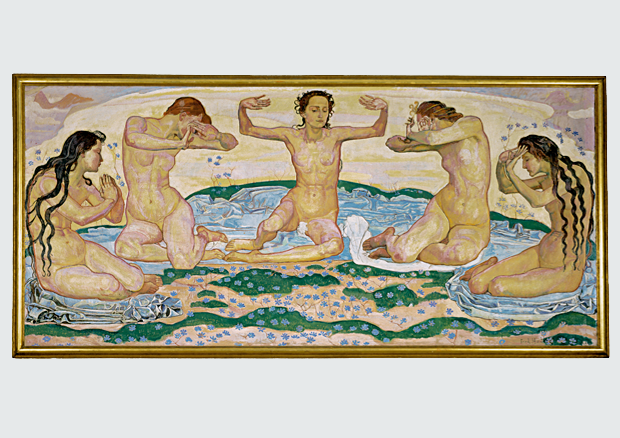Gemälde & Skulpturen
One of the first high points is represented by the group of works, unique in Switzerland, by the Italian painters of the Trecento and Quattrocento, among them the key work Maestà by Duccio di Buoninsegna.
The early modern is represented by excellent examples of Bernese paintings from the late Gothic to the Realism of the 19th century, from Niklaus Manuel Deutsch through Joseph Heintz, Joseph Plepp, Albrecht Kauw and Joseph Werner up to Albert Anker. The Museum of Fine Arts Bern owns the most important group of works by this artist.
The collection of works from the middle of the 19th century onwards is of international significance. The development of modern art, from Impressionism to Rothko and Pollock, can be followed with almost no gaps through master works. High points are individual works from Manet, Cézanne, Monet, Pissarro, Renoir, van Gogh and Toulouse-Lautrec and groups of works from Cubism, the Blue Rider School, Die Brücke, Bauhaus and Surrealism.
In addition to these, Swiss artists such as Ferdinand Hodler, Cuno Amiet and Giovanni Giacometti are of course also represented with main works from all their creative
epochs. Even after the move of the Paul Klee Foundation to its new
centre, Paul Klee is still present in the Museum of Fine Arts in outstanding examples of his work.
One of the museum’s main focuses is still the
collecting and research of so-called outsider art. One of its most
internationally prominent representatives is the former Bernese farmhand Adolf Wölfli (1864-1930), whose bequest is maintained by the Adolf Wölfli Foundation, founded in 1975.
The Museum of Fine Arts Bern belongs to the few public collections in Switzerland which have long been explicit in supporting art by female artists. Names such as Sophie Taeuber-Arp, Louise Bourgeois, Meret Oppenheim and Marina Abramovic are proof of this.
Contemporary positions are represented by comprehensive groups of works by Bernhard Luginbühl, Franz Gertsch, James Lee Byars, Markus Raetz, Urs Lüthi, Dieter Roth and Sigmar Polke.


